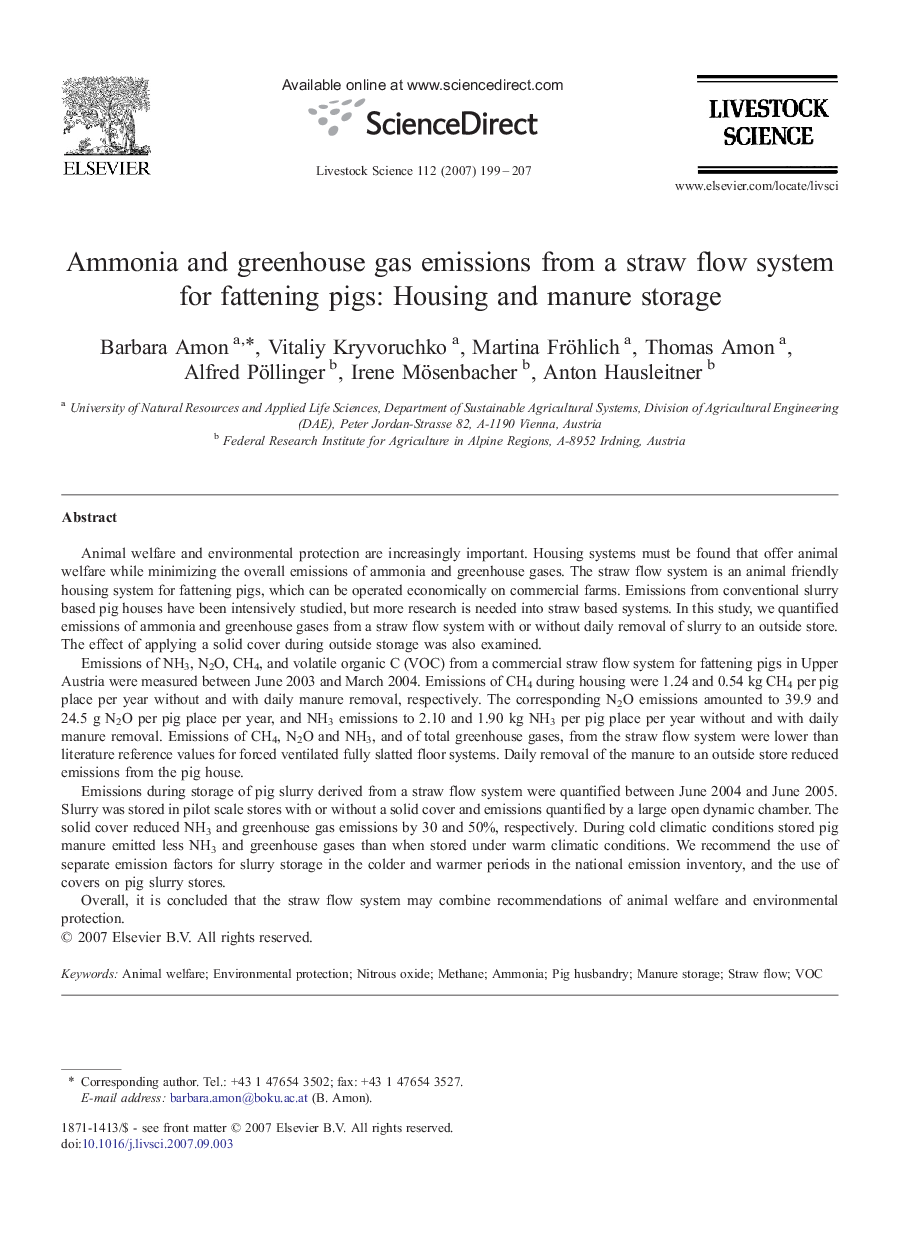| Article ID | Journal | Published Year | Pages | File Type |
|---|---|---|---|---|
| 2448725 | Livestock Science | 2007 | 9 Pages |
Animal welfare and environmental protection are increasingly important. Housing systems must be found that offer animal welfare while minimizing the overall emissions of ammonia and greenhouse gases. The straw flow system is an animal friendly housing system for fattening pigs, which can be operated economically on commercial farms. Emissions from conventional slurry based pig houses have been intensively studied, but more research is needed into straw based systems. In this study, we quantified emissions of ammonia and greenhouse gases from a straw flow system with or without daily removal of slurry to an outside store. The effect of applying a solid cover during outside storage was also examined.Emissions of NH3, N2O, CH4, and volatile organic C (VOC) from a commercial straw flow system for fattening pigs in Upper Austria were measured between June 2003 and March 2004. Emissions of CH4 during housing were 1.24 and 0.54 kg CH4 per pig place per year without and with daily manure removal, respectively. The corresponding N2O emissions amounted to 39.9 and 24.5 g N2O per pig place per year, and NH3 emissions to 2.10 and 1.90 kg NH3 per pig place per year without and with daily manure removal. Emissions of CH4, N2O and NH3, and of total greenhouse gases, from the straw flow system were lower than literature reference values for forced ventilated fully slatted floor systems. Daily removal of the manure to an outside store reduced emissions from the pig house.Emissions during storage of pig slurry derived from a straw flow system were quantified between June 2004 and June 2005. Slurry was stored in pilot scale stores with or without a solid cover and emissions quantified by a large open dynamic chamber. The solid cover reduced NH3 and greenhouse gas emissions by 30 and 50%, respectively. During cold climatic conditions stored pig manure emitted less NH3 and greenhouse gases than when stored under warm climatic conditions. We recommend the use of separate emission factors for slurry storage in the colder and warmer periods in the national emission inventory, and the use of covers on pig slurry stores.Overall, it is concluded that the straw flow system may combine recommendations of animal welfare and environmental protection.
